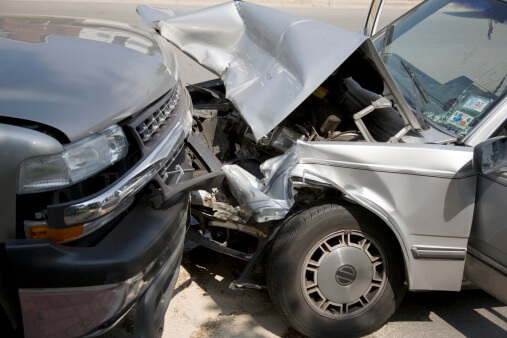Head-on crashes are a serious risk for drivers in Chicago and throughout the state of Illinois. 2012 Illinois Crash Facts & Statistics reveal a total of 2,045 head-on crashes statewide over the course of the year. In total, 96 head-on crashes resulted in fatalities among involved motorists. Injury occurred in 897 of the head-on crashes, and injuries were classified as “A” injuries or severe injuries in 293 of the collisions.
Since cars strike directly when a head-on collision occurs, these car accidents tend to be deadlier than many other types of collisions. There is magnified force and momentum when two cars strike each other directly from the front. Drivers need to do what they can to prevent head-on crashes, and part of this effort involves understanding where head-on collisions are most likely to occur.
Where are Head-On Crashes Most Likely to Occur?
Safety Transportation reports ¾ of head-on crashes happen on rural roads, and ¾ happen on undivided two lane roads. This means drivers in Chicago may actually be at greater risk of getting into a head-on crash if they leave the city for any reason. While head-on crashes may not be as common in urban areas, National Highway Traffic Safety Administration still indicates this crash type accounts for seven percent of fatal crashes in urban locations.
In urban areas, sites of head-on crashes can include one-way roads which drivers enter going in the incorrect direction. Drivers who become distracted, who are falling asleep behind the wheel, and who are impaired can also cross a center line and strike another vehicle head-on while traveling on virtually any road in the city. Head-on crashes can also happen in chain-reaction accidents, when one car is pushed into oncoming traffic by the force of a collision or when one car swerves into oncoming traffic to avoid impaired vehicles which have crashed in his lane.
While these are all common locations where head-on crashes are most likely to occur, one of the most likely locations for these accident types is on or near freeways or highways. Drivers may enter freeways or highways traveling in the wrong direction, opposing oncoming traffic. This almost always leads to a head-on crash.
Federal Highway Administration performed a study of 110 wrong-way crashes and found:
- 78 percent occurred on the actual freeway.
- 31 percent happened on the exit ramp leading off the freeway.
- Two occurred at the entrance ramp leading onto the freeway.
- Six occurred on a roadway connecting one freeway to another freeway.
Drivers may not see they are getting on the highway using the exit instead of the entrance, and my not realize their error until they are actually on the highway and approaching oncoming traffic at high-speeds. This results in the driver hitting another vehicle head-on when he encounters the car. A serious accident often results.
















